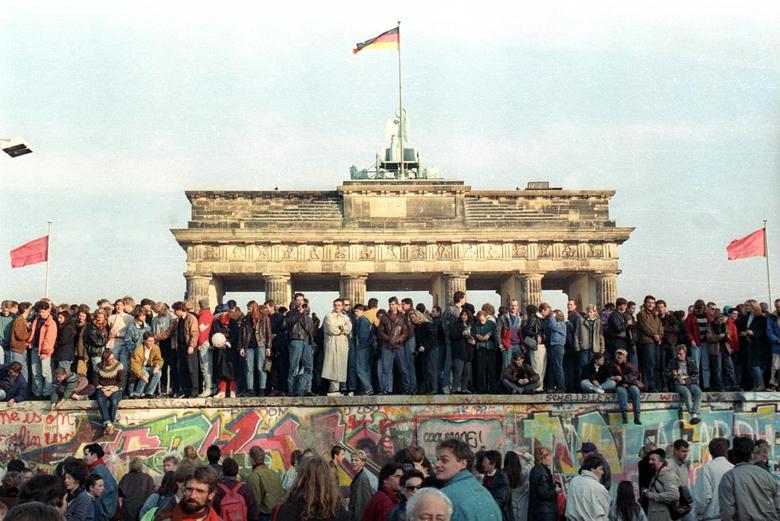Berlin Wall’s pertinent legacy as barriers back in fashion

In just a few weeks’ time, on Nov. 9, the world will mark the 30th anniversary of the fall of the Berlin Wall and collapse of the Iron Curtain. This was a barrier that cleaved its way not just across one of Europe’s greatest cities, but represented an ideological fault line, the tectonic plate of post-war Europe. The year 1989 was the end of this post-Second World War order in Europe and the collapse of the Soviet Empire and communism but, three decades later, how has the European project progressed and just why are walls back in fashion?
The Berlin Wall, which was the most visual emblem of the Cold War in Europe, lasted 28 years. Unlike the Great Wall of China or Donald Trump’s wall on the US border with Mexico, which were designed to keep barbarians or unwanted immigrants out, the Berlin Wall was to keep people in. East Germany was losing too many workers, many of whom were crossing over to West Berlin. In great secrecy, Operation Rose was mounted, with a barbed wire fence going up from midnight on Aug. 13, 1961. Berliners woke to find their capital divided. It even fooled Western intelligence agencies, which did not think a full border closure was feasible. More than 400 trucks droveby circuitous routes to Berlin with the necessary materials.
Popular culture made the wall infamous, glamourizing the daring escapes, often in film. Some went via sewers, some tunneled, and one attempt even involved crashing a train through the wall. But, for every success, there were many failures and at least 140 were killed trying to make the crossing. In this sad sense, the wall actually worked, and the flood of those heading west was stemmed. Perhaps only about 5,000 people managed to make it across the wall in those 28 years.
Germany is still unified in name only and, while its constituent parts are closer, noticeable divisions remain. Some argue that this process of convergence might even be heading backwards. To be from East Germany is still a powerful identity. Moreover, far-right groups such as Pegida and Alternative for Germany have prospered far more in the east, where anti-immigrant sentiment is sharper. The hard left in the form of Die Linke also fares well. They don’t appear to be so enamored with democracy either. Economically, the differences are still significant if not at the scale of 1989. In 2018, the eastern Germany economy was at 75 percentof the western. Average salaries are lower, unemployment higher and most major German corporates still have their headquarters in the west.
Fortress Europe has acquired more than 1,000 kilometers of border walls in 10 countries since 1989.
Chris Doyle
But the rifts are opening up all over Europe along much the same lines. There is a resurgence of the extremes on the left and right; the eastern states in the form of the Visegrad Group (Poland, Hungary, Czech Republic and Slovakia) veer to less liberal and even undemocratic trends; and separatist movements are powerful, not least in the case of Catalonia in Spain.
Moreover, 30 years ago, as walls and checkpoints came tumbling down, one hoped they would never reappear. Yet the edge of the EU, where it has land borders to non-EU areas, is largely walled or fenced. Fortress Europe has acquired more than 1,000 kilometers of border wallsin 10 countries since 1989, when there were just two walls to today’s 15. In 2015, Hungary built a fence firstly along its border with Serbia and then Croatia. Greece has a fence along its border with Turkey. At least Nicosia is left as perhaps the last European city with a dividing wall running through its heart. Yet the EU’s borders are the most deadly in the world, with two-thirds of all migrant-related deaths happeningthere, mostly at sea.
Building walls is a global trend. The most notorious is Donald Trump’s wall along the world’s busiest border, the US-Mexican, should it be completed. Yet Trump was actually just following the trend, as many countries were doing this before it became his mission. At the end of the Second World War, only seven border walls existed. At the end of the Cold War, this had risen to 15, whereas today there are about 77. Every year some 14,000 people die trying to cross borders. The physical walls are often there to reassure, to give a sense of protection, although in reality they may do little, not least in an age of planes and missiles. Finland’s fence with Russia is hardly going to keep out the Russian army.
The Middle East increasingly has its own share of border walls. Saudi Arabia and Kuwait have theirs with Iraq, Israel has walls with every neighbor, including inside the West Bank and around Gaza. Both Egypt and Tunisia are building walls on their border with Libya.
Walls tend to divert migrant flows, not prevent them. Like water, migrants find another course. As an anti-terrorist device, they are also of questionable value, as well-resourced terrorist groups are unlikely to be thwarted. They are also hugely expensive. Walls also tend to blind us to the need to resolve the problems on the other side of the barrier — a heads-in-the-sand approach that rarely works.
All these wars and fences are products of our fears, both rational and irrational. They are rarely solutions and, often through bottling up the problems, make them worse in the long run. The Berlin Wall was a short-term success but a long-term disaster. Thirty years on, it is time to remember this.
- Chris Doyle is director of the London-based Council for Arab-British Understanding. Twitter: @Doylech








































